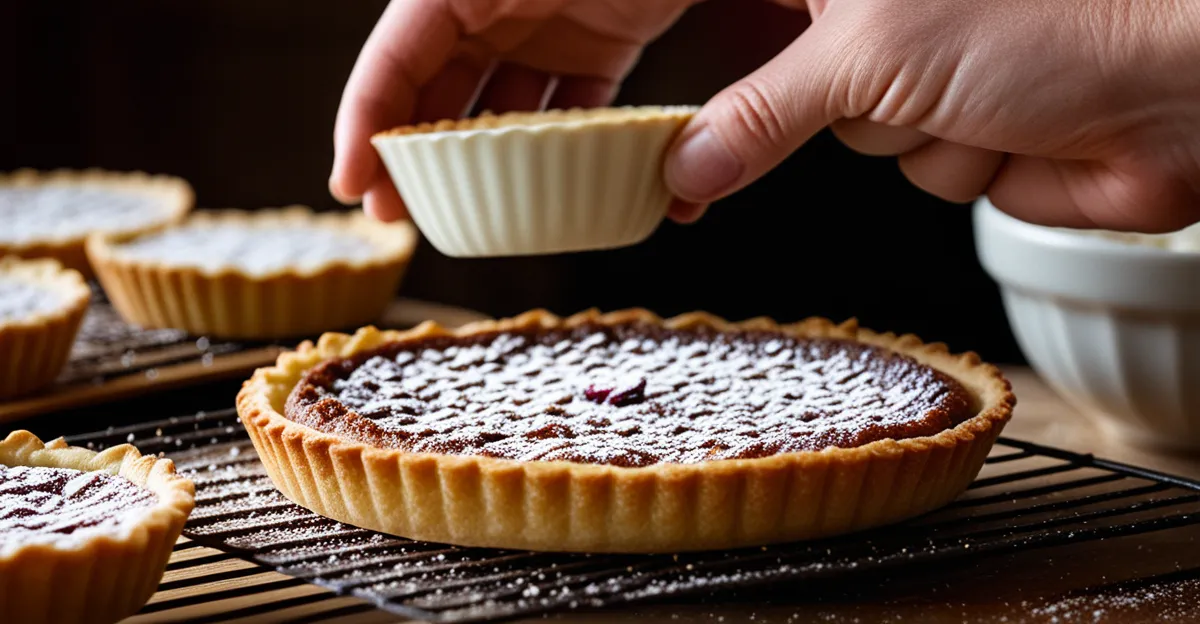Understanding Traditional Bakewell Tart
Origins and timeless appeal explained
The traditional Bakewell tart origin dates back to early 19th-century England. It is famously associated with the town of Bakewell in Derbyshire. According to popular stories, the tart was created accidentally when a cook in the local inn layered jam and almond filling on pastry, resulting in a delightful treat that quickly gained popularity. This rich history firmly anchors the Bakewell tart as an iconic British dessert.
Also read : What are the tips for making a perfect spotted dick?
The Bakewell tart definition highlights its key components: a crisp shortcrust pastry base, a layer of fruit jam—typically raspberry or strawberry—and a distinctive almond frangipane filling. This almond layer, often topped with flaked almonds or icing, sets it apart in texture and taste from other tarts or cakes. Its balance of sweet jam and nutty frangipane defines its signature flavor.
Understanding the history of Bakewell tart helps explain why it remains a classic. Its simplicity, combined with wholesome ingredients and a luscious texture, creates a comforting, nostalgic appeal. British baking traditions cherish this tart, maintaining its status both in homes and patisseries nationwide.
Also read : How do you prepare a savory steak and kidney pie from scratch?
Gathering Ingredients and Tools
Sourcing everything needed for authentic Bakewell tart
To create a truly authentic Bakewell tart, precise selection of Bakewell tart ingredients is crucial. The shortcrust pastry starts with plain flour, cold butter, a pinch of salt, and cold water to keep the dough tender yet sturdy. For the jam layer, raspberry or strawberry jam is preferred, providing a balance of sweet and tart flavors essential to the recipe. The almond frangipane filling requires ground almonds, caster sugar, butter, eggs, and a hint of almond extract for depth.
Equally important are the traditional baking tools that make preparation smooth and efficient. A sturdy tart tin with a removable base is recommended for easy removal. A rolling pin helps achieve the right thickness of the pastry, while parchment paper and baking beans are essential for blind baking the crust evenly, preventing it from puffing or shrinking. Mixing bowls and an electric whisk streamline blending the frangipane filling.
Selecting quality ingredients enhances the final product. Fresh cold butter improves pastry flakiness, and homemade or high-quality jams ensure vibrant flavors. Ground almonds should be fine and unsweetened. With these essentials for Bakewell tart at hand, the baking process becomes straightforward, setting the foundation for a classic British dessert.
Preparing the Pastry Case
Shortcrust pastry fundamentals for Bakewell tart
The shortcrust pastry for Bakewell tart is the essential foundation, requiring careful preparation to achieve a crisp, sturdy base. Begin by blending cold butter and plain flour until the mixture resembles fine breadcrumbs. Adding a pinch of salt enhances flavor, while cold water binds the dough without overworking it, ensuring tenderness.
Chilling the pastry for at least 30 minutes solidifies the butter, preventing shrinkage during baking. Once chilled, roll out the dough evenly to fit your tart tin. Carefully line the tin, pressing pastry into the edges without stretching; this preserves shape and texture.
Blind baking is crucial—place parchment paper over the pastry and fill with baking beans to stop the base from puffing and shrinking. Bake until the edges turn golden and the base is set but not fully cooked. This step creates a crisp shell that supports the Bakewell tart jam layer and almond filling without sogginess.
Mastering pastry preparation ensures a homemade tart base with the ideal balance of flakiness and structure, integral for an authentic Bakewell tart experience.
Creating the Jam and Almond Filling
Subtle layering for signature Bakewell tart taste
The Bakewell tart jam layer typically uses raspberry or strawberry jam, prized for their balance of sweetness and tartness. Choosing a quality jam, whether homemade or store-bought, is crucial. How does the jam affect the tart’s texture? It forms a moist barrier between pastry and filling, preventing sogginess while adding vibrant flavor.
Next is the almond frangipane filling, made by combining ground almonds, caster sugar, softened butter, eggs, and almond extract. This mixture creates the tart’s distinctive nutty richness. How is the frangipane’s texture ensured? Thorough mixing until smooth, but not overbeaten, maintains its light yet dense consistency.
Layering follows a precise order. First, spread the jam evenly over the blind-baked pastry case. Then, gently pour the frangipane filling atop, smoothing carefully to avoid mixing layers. This layering ensures the classic contrast: a crisp base, fruity middle, and almond topping.
Mastering the layering technique is key to an authentic Bakewell tart. Each component’s texture and flavor must remain distinct yet harmonious, delivering the tart’s timeless appeal bite after bite.
Assembling and Baking the Tart
Fusing layers into the perfect Bakewell tart
When assembling Bakewell tart, start with the blind-baked shortcrust pastry case arranged on a baking tray to catch any spills. Spread an even layer of the chosen Bakewell tart jam layer—preferably raspberry or strawberry—across the base. This not only adds flavour but acts as a moisture barrier, protecting the pastry from sogginess.
Next, gently pour the prepared almond frangipane filling over the jam, smoothing it with a spatula for an even surface. Be careful not to disturb the jam layer, maintaining the signature contrast in texture and taste. This careful layering is essential: it ensures the almond filling bakes evenly and the tart’s structure remains intact.
Preheat the oven to around 180°C (350°F), a common Bakewell tart oven temperature that balances gentle cooking with sufficient heat to brown the frangipane. Bake for approximately 35–40 minutes, or until the almond filling is golden and set. Check doneness by gently pressing the filling’s centre—it should spring back without wobbling.
Avoid overbaking, which can dry out the filling, or underbaking, which leaves it soggy. Keeping these precise steps in mind ensures an evenly baked, classic Bakewell tart, ready to delight.
Serving and Enjoying Bakewell Tart
Savor the classic treat with style and tradition
Serving Bakewell tart at the right moment maximizes its flavour and texture. Allow the tart to cool in the tin for 10–15 minutes after baking; this rest time lets the almond frangipane filling set firmly, making slicing cleaner and easier. Cutting too soon risks crumbling or losing the distinct layers that define a traditional Bakewell tart.
When slicing, use a sharp knife warmed slightly under hot water and dried—this prevents the filling from sticking, preserving the tart’s neatness and visual appeal. The classic presentation highlights the golden almond topping and the crisp pastry base, enticing guests with a hint of homemade charm.
Traditional accompaniments elevate the experience. A dollop of clotted cream or softly whipped double cream adds richness, complementing the tart’s fruity and nutty notes. Alternatively, a light dusting of icing sugar can enhance its delicate look without overpowering taste.
Pairing Bakewell tart with tea or coffee is customary. The robust warmth of black tea or a strong espresso balances the dessert’s sweetness, creating a harmonious finish. These serving tips ensure every bite honors the tart’s heritage and delights with timeless British hospitality.




